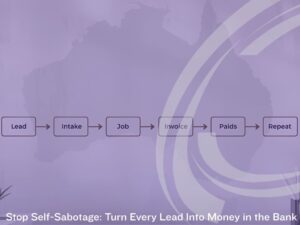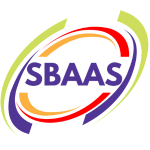Stop the Slow Pay: The Small Business Debt Recovery Playbook Australian SMEs Can Use Today
Cash is oxygen. Late payments choke growth, add stress, and distract your team from serving customers. This practical playbook helps Australian businesses prevent late payments, speed up invoicing, and use the right pathways to recover their debts quickly and professionally. It blends prevention with action so you get paid sooner, with minimal fuss.
Why this playbook matters now
Late payment remains one of Australian businesses’ most significant cash flow risks. Time to be paid affects hiring, stock levels, and the ability to invest. Recent national efforts to improve payment times, including reforms that spotlight best and worst payers, give suppliers new leverage. If you operate in Queensland, minor debt disputes for small, fixed sums can be handled through QCAT, which keeps costs and complexity down.
This article gives you a step-by-step approach to debt recovery. It covers prevention, escalation, and enforcement. It also points to tools and rules you can use today.
- Small business debt recovery starts before you send the invoice. Clear terms, deposits, and easy payment options reduce risk.
- Follow a disciplined follow-up schedule from day one. Document everything. Escalate on time.
- Use a formal letter of demand if reminders fail.
- In Queensland, use QCAT for unpaid fixed sums within its monetary limit. Serve correctly, prepare evidence, and apply for a default decision if the other party does not respond.
- If a debtor ignores an order, register it in court and enforce it.
- For repairers and other custodians of goods, know your possessory lien rights, uncollected goods rules, and when PPSR registration helps.
The aim: protect cash, not just chase it
Debt recovery is not only about collecting overdue invoices. It is a system that prevents bad debt, reduces friction, and sets clear consequences for non-payment. When you build that system into daily operations, people pay faster, and disputes shrink.
Our approach keeps sentences short, paragraphs tight, and structure clear so your team can act immediately.
Part 1: Build the foundations that prevent debt
Set crystal-clear terms from day one
Strong credit control prevents most problems. Put your pricing, due dates, late fees, and rights to retain goods in writing. Use plain English. Get a signature before work starts. This simple step supports reliable debt recovery across every industry.
Include:
- Payment due on delivery, pickup, or a clear number of days.
- Any interest or admin fees for overdue balances permitted in your state.
- The right to pause work on unpaid accounts.
- Recovery costs payable by the debtor, where lawful.
- Clear escalation steps.
Use deposits and basic checks
Ask for a deposit for high-value or new clients. Do simple ID checks or trade references for riskier jobs. These measures reduce exposure and support debt recovery by lowering the chance of non-payment.
Invoice fast and make payment easy
Issue the invoice as soon as the work is complete. Offer multiple payment methods, including card and online options. This change often cuts days from your cash cycle and improves debt recovery without adding overhead.
Front-of-house signals that work
If your team holds customer goods, use clear signage and release procedures. Control keys or assets until payment clears. These policies reinforce your terms and reduce loss events that complicate debt recovery.
Part 2: The first 30 days, a disciplined follow-up routine
Debt recovery succeeds when your team follows a simple timetable.
Day 0
Send the invoice. Confirm receipt. Log the due date.
Day 7 overdue
Send a friendly reminder. Assume good intent. Offer help to resolve issues.
Day 14 overdue
Send a firmer reminder with a clear deadline. State the amount, the original due date, and what happens next. Keep a record.
Day 21–30 overdue
Issue a formal letter of demand. Send by registered post and email with read receipt. Set a final cut-off, usually seven to fourteen days.
Document each contact. Keep emails, call notes, and delivery receipts. Good records make debt recovery faster if the matter proceeds to a tribunal or court.
Part 3: When reminders fail, escalate the right way
Debt recovery through QCAT in Queensland
If you operate in Queensland and the amount is a fixed sum within QCAT’s minor debt limit, consider a minor debt application for unpaid invoices or agreed charges. You can file online via QCase or lodge forms at a registry.
Prepare your file:
- The invoice and agreed terms or quote acceptance.
- Proof that the work or goods were supplied.
- Your reminders and the letter of demand.
- The correct legal name and address of the debtor.
Serve the application correctly. The respondent has a set period to reply. If there is no response, you may seek a decision by default. QCAT may direct mediation or list a hearing. The process is designed to be accessible for self-represented parties, which helps debt recovery remain cost-effective.
Watch the fees
QCAT updates fees annually on 1 July. Check the current schedule before filing.
Enforce the order if payment still does not arrive
If the debtor ignores a QCAT decision, register the order in the Magistrates Court and use court enforcement. Depending on the situation, you may consider wage, account garnishments, or enforcement warrants. There is a set time limit to enforce, so act promptly. This final step is often where debt recovery succeeds or fails.
Part 4: Secure your position when you hold customer goods
Many businesses hold customer property during or after service. Examples include repairers, printers, and fabricators. These firms often rely on a possessory lien, the right to retain goods until paid. The lien usually arises when work improves the goods at the customer’s request. Handle it carefully and lawfully.
The Disposal of Uncollected Goods framework may apply if goods remain uncollected in Queensland. There are notice steps, timing rules, and sometimes advertising before the sale. Following the rules reduces risk and strengthens small business debt recovery outcomes.
If you release goods without full payment, consider registering a security interest on the PPSR where appropriate. A timely, correct registration can protect your interest, although it differs from a possessory lien. Registration is online and available around the clock.
Part 5: The Australian payment context you can use
The national environment is shifting toward faster supplier payment. Reforms to the Payment Times Reporting Scheme have tightened reporting, made it easier to compare payers, and created recognition for entities that pay small suppliers within 20 days. You can use the public register to screen large customers and set tighter terms if their record is poor. This is smart prevention and simplifies debt recovery.
Digital tools also help. Online invoicing and multiple payment options reduce delays. Pair process discipline with the right platform, and you will see shorter payment cycles. Debt recovery is achieved through better design, not just tough talk.
Part 6: Sector-specific tips that work
Trades and field services
- Agree scope and price in writing, including variations.
- Take a deposit for parts and long lead items.
- Send the invoice the same day the work finishes.
- Offer card-on-file or online payment links.
- Follow the 7, 14, then final letter ladder with no exceptions.
These steps keep debt recovery on track for tradies with tight margins and busy schedules.
Professional services
- Use engagement letters with clear milestones and billing triggers.
- Bill monthly in arrears or part-bill in advance for complex work.
- Stop work if accounts exceed limits, and say so upfront.
- Consider direct debit for retainers or recurring fees.
Hospitality and retail
- Use EFTPOS settlement and daily reconciliation to spot problems early.
- For events or large orders, take staged payments tied to dates.
- Keep cancellation and non-refundable deposit terms fair and straightforward.
Manufacturing and fabricators
- Use purchase order controls and pre-production deposits.
- Hold finished goods until final payment clears.
- Photograph shipped items and keep dispatch logs.
All sectors benefit from one principle. A simple, consistent system makes debt recovery faster and less stressful.
Part 7: The internal playbook, ready to run
The following checklist is adapted from proven credit and collections controls. It underpins effective debt recovery across Australia. Keep it on one page and train your team to use it.
Before you start the job
- Confirm the legal entity and ABN.
- Get written acceptance of terms and payment timing.
- Take a deposit if risk is high.
- For goods in your possession, explain your release rules.
At invoicing
- Issue the invoice on the same day the job completes.
- Check totals, descriptions, and due dates.
- Include easy payment options and a contact for queries.
If overdue
- Day 7: friendly reminder.
- Day 14: firm reminder with a deadline.
- Day 21–30: letter of demand with a final cut-off.
- Then file with the right tribunal or court.
This disciplined routine is the backbone of debt recovery.
Part 8: Using QCAT, a practical walk-through for Queensland
Eligibility
Unpaid, fixed sums within the monetary threshold for minor debts.
How to file
- Gather evidence and complete the minor debt application.
- File online via QCase where available, or lodge at a registry.
- Pay the application fee per the current schedule.
Service and timelines
- Serve correctly within the required timeframe.
- The respondent has a set period to respond.
- If no response, request a default decision.
Mediation and hearing
- QCAT may list mediation for some claims.
- Bring three copies of your documents.
- Present facts clearly. Focus on what was agreed, what was delivered, and what remains unpaid.
If you win and they still do not pay
- Register the decision in the Magistrates’ Court and enforce.
- Consider garnishees or enforcement warrants where applicable.
- Keep an eye on time limits.
These steps turn debt recovery into a repeatable process rather than a stressful scramble.
Outside Queensland? Where to find the right pathway
SBAAS is based in Queensland, and we have assisted clients in most jurisdictions. If you are not in Queensland, start with your state or territory’s official small-claims or tribunal page below.
- New South Wales, NSW Civil and Administrative Tribunal, Consumer and Commercial Division. https://ncat.nsw.gov.au/case-types/consumers-and-businesses/consumer-claims.html
- Victoria, Victorian Civil and Administrative Tribunal, Goods and Services disputes. https://www.vcat.vic.gov.au/case-types/goods-and-services
- Australian Capital Territory, ACT Civil and Administrative Tribunal, Civil disputes. https://www.acat.act.gov.au/case-types/civil-disputes
- South Australia, Courts Administration Authority, Starting a civil case, minor civil. https://www.courts.sa.gov.au/civil-cases/starting-civil-case/
- Western Australia, Magistrates Court of WA, Civil matters. https://www.magistratescourt.wa.gov.au/C/civil_matters.aspx
- Tasmania, Magistrates Court of Tasmania, Minor civil claims. https://www.magistratescourt.tas.gov.au/about_us/civil/minor_civil_claims
- Northern Territory, NT Government, Small claims. https://nt.gov.au/law/courts-and-tribunals/small-claims
Part 9: When customers take goods without paying
It happens. A customer removes goods or a vehicle before paying. You still have the debt. Focus on civil recovery. Use your documented steps and move to tribunal action if needed. For Queensland, uncollected goods rules and clear signs about release policies help deter these incidents. Appropriate use of liens and notices, applied lawfully, supports debt recovery in these high-risk moments.
Part 10: Your tech stack for faster cash
- Accounting and invoicing: Choose a platform that supports online invoices and reminders.
- Payments: Use online links, card-on-file, or direct debit to reduce friction.
- Automation: Schedule reminders at 7, 14, and final dates.
- Evidence: Maintain a central folder for quotes, approvals, job photos, and delivery proofs.
- Register checks: Use the PPSR where a security interest is relevant.
Set it once. Train your team. This is how modern small business debt recovery scales without drowning your staff in admin.
Part 11: Governance, readability, and customer experience
Clear, readable communication helps customers act quickly. Use plain English, short sentences, and logical headings. Remove jargon. Avoid em dashes, since they often reduce clarity on small screens. These practices reduce disputes and support faster debt recovery because clients understand what to do, when to do it, and how to pay.
Part 12: Measuring progress
Track three simple metrics monthly:
- Days Sales Outstanding (DSO). Lower is better.
- Time to be paid. Aim for shorter cycles and fewer outliers.
- Promise-to-pay kept rate. Measure how often payment plans are completed on time.
Add a quarterly check of the Payment Times register when you deal with large customers. Adjust your terms if a buyer consistently pays slowly. Use this insight to strengthen debt recovery across your portfolio.
Frequently asked questions
Does debt recovery harm client relationships?
Handled well, no. Clear terms and polite reminders show professionalism. Most clients appreciate clarity.
Should I use a debt collection agency?
Consider one after your letter of demand if you prefer not to file yourself. Compare agency commissions with tribunal fees and the likelihood of recovery.
Can I claim costs?
In minor debt matters, allowable costs are limited. They often cover filing and service fees, plus some basic searches. Check the current rules before you file.
What about other states and territories?
Each has a pathway for small claims. The prevention and follow-up routine in this guide works anywhere in Australia. Confirm local forms and limits in your jurisdiction.
- New South Wales, NSW Civil and Administrative Tribunal, Consumer and Commercial Division. https://ncat.nsw.gov.au/case-types/consumers-and-businesses/consumer-claims.html
- Victoria, Victorian Civil and Administrative Tribunal, Goods and Services disputes. https://www.vcat.vic.gov.au/case-types/goods-and-services
- Australian Capital Territory, ACT Civil and Administrative Tribunal, Civil disputes. https://www.acat.act.gov.au/case-types/civil-disputes
- South Australia, Courts Administration Authority, Starting a civil case, minor civil. https://www.courts.sa.gov.au/civil-cases/starting-civil-case/
- Western Australia, Magistrates Court of WA, Civil matters. https://www.magistratescourt.wa.gov.au/C/civil_matters.aspx
- Tasmania, Magistrates Court of Tasmania, Minor civil claims. https://www.magistratescourt.tas.gov.au/about_us/civil/minor_civil_claims
- Northern Territory, NT Government, Small claims. https://nt.gov.au/law/courts-and-tribunals/small-claims
The SBAAS one-page checklist for teams
Use this on the wall near your front desk or shared drive. It keeps small business debt recovery on track every day.
Before the job
- Confirm entity, ABN, and address.
- Signed acceptance of clear payment terms.
- Deposit received if risk is high.
During the job
- Capture approvals for variations.
- Keep photos, delivery dockets, and logs.
At completion
- Invoice the same day.
- Offer instant payment options.
- Confirm receipt.
If overdue
- Day 7 reminder.
- Day 14 firm notice.
- Day 21–30 letter of demand.
- Lodge with the tribunal if unpaid.
After orders
- Enforce if not paid on time.
- Review lessons and update terms.
This turns debt recovery into simple daily habits.
Final word
Healthy cash flow gives you options. Put this playbook in place; you will see shorter cycles, fewer disputes, and stronger margins. If you want hands-on help setting up your small business debt recovery system, book a conversation with our team today. Or learn more about who we are and how we work on our About Us page: https://www.sbaas.com.au/about-us/
Sources
Australian Government. Payment Times Reporting Scheme: Information sheet 10, Reforms to Payment Times Reporting. https://paymenttimes.gov.au/guidance/regulatory-resources/information-sheet-10
Australian Government. Payment Times Reporting Scheme, Home. https://paymenttimes.gov.au/
Queensland Civil and Administrative Tribunal. Minor debt disputes, learn about minor debt disputes and the application process. https://www.qcat.qld.gov.au/case-types/debt-disputes
Queensland Civil and Administrative Tribunal. Minor civil dispute process, responding, service and next steps. https://www.qcat.qld.gov.au/applications/minor-civil-dispute-process
Queensland Civil and Administrative Tribunal. QCase online filing for minor civil disputes. https://www.qcat.qld.gov.au/qcase
Queensland Civil and Administrative Tribunal. Fees and allowances. https://www.qcat.qld.gov.au/applications/fees-and-allowances
Queensland Courts. Enforcing tribunal orders, registering a QCAT decision for enforcement. https://www.courts.qld.gov.au/going-to-court/money-disputes/money-disputes-under-150000/enforcing-tribunal-orders
Queensland Civil and Administrative Tribunal. Enforcing a QCAT decision. https://www.qcat.qld.gov.au/qcat-decisions/enforcing-a-qcat-decision
Queensland Government. Rules about uncollected goods in Queensland. https://www.qld.gov.au/law/laws-regulated-industries-and-accountability/queensland-laws-and-regulations/selling-your-products-and-services/sales-practices/rules-about-uncollected-goods
Australian Financial Security Authority. Personal Property Securities Register. https://www.ppsr.gov.au/
Australian Financial Security Authority. How to register a security interest on the PPSR. https://www.ppsr.gov.au/registering/create-your-registration/how-register-security-interest-ppsr
Automotive Aftermarket Association of Australia. Rights of Repairers, the repairer’s lien basics. https://www.aaaa.com.au/wp-content/uploads/2018/05/September-2017-Rights-of-Repairers.pdf
Xero. Australian Small Business Insights. https://www.xero.com/au/resources/small-business-insights/
Xero. How to reduce late payments and get paid faster. https://www.xero.com/au/guides/how-to-reduce-payment-delays/
Business.gov.au. Write a letter of demand. https://business.gov.au/people/disputes/write-a-letter-of-demand
Queensland Small Business Commissioner. Letter of demand template. https://www.publications.qld.gov.au/dataset/dispute-support/resource/8e0d060d-a6a5-4913-bb8e-b06daeac47d8

Trudi Allgood is the Chief Commercial Officer at SBAAS. With over 20 years of experience in finance, human resources, and operational leadership, she is known for guiding organisations through complex change with clarity, confidence, and a results-driven focus.
She has successfully managed government-funded programs, including the NDIS and the Indigenous Eye Health Service (IRIS) project, ensuring full compliance with reporting and performance requirements. Trudi’s extensive project management experience extends from the implementation of new payroll systems to the delivery of complex build and renovation works, consistently meeting timelines, budgets, and stakeholder expectations.
Her practical leadership style, strong communication skills, and commitment to continuous improvement make her a trusted advisor. Passionate about the role of small businesses in Australia’s economy, Trudi is dedicated to helping them grow sustainably, perform at their best, and deliver long-term impact.
Qualifications:
- Cert IV Bookkeeping and Accounting
- Diploma of Accounting
- Diploma of Business (Operations)
Memberships and Accreditations:
- Registered BAS Agent
- Xero Payroll Certified
- SM8 Partner Certified
- Small Business Association of Australia Sponsor
Our Consulting Services

Management Consulting
Compliance & Risk

Professional Writing Services
Consistency in Communication

Small Business Consulting
Sustainable Businesses

Start-ups
Set-up for Success
Further reading

Pragmatism Wins: How Australian Businesses Turn AI Hype Into Real Results
Australian organisations are moving beyond experiments. This article shows how Australian businesses across all sectors and sizes can scale value, manage risk, and boost productivity with pragmatic AI.

Stop Self-Sabotage: Turn Every Lead Into Money in the Bank
Winning work is hard. Losing time and cash to clunky admin is optional. This guide shows how to design an automated business process that captures leads, books jobs, issues invoices with timely reminders, and keeps clients returning. Plain English, practical steps, and a sharp focus on simplification, speed, and cash flow.

Seeing the Wrong Picture: What Most Business Owners Miss When Reviewing Their Performance
Business owners aren’t short on data, but many are missing what matters most. Discover what most business owners miss when reviewing their performance and how to shift from surface-level tracking to strategic insight.

Navigating Economic Uncertainty: A Roadmap for Australian Small Businesses
Discover how global economic shifts and local consumer sentiment are reshaping Australian small businesses. Equip yourself with actionable insights and strategies to thrive amidst uncertainty.

The Hidden Cost of Success: How Leadership Burnout is Crippling Australia’s Small Business Sector
Leadership burnout is rising fast across Australia’s small business sector. This article unpacks what it looks like, what causes it, and how SME leaders can protect themselves and their teams before the damage becomes irreversible.

From Centre to the Edges: A Practical Guide to the Political Left to Right Scale for Australian Business
We hear “far left” and “far right” every day. This guide starts in the middle, explains each step to the edges, and shows what the political left-to-right scale means for Australian enterprises of all sizes.
SBAAS Events
What our clients are saying about us
Posted onTrustindex verifies that the original source of the review is Google. Eric and Trudi recently wrote a tender for me and the experience was amazing. I went into the process in a state of complete overwhelm. Eric was able to break it down into achievable chunks for me, and reassure me that I had a great service and business model to offer. I came out the other end of the process with all of my business policies, a better understanding of my offer, and a foundation to launch all future tender applications. Eric took all of my information and turned it into a pretty package that I could market.Posted onTrustindex verifies that the original source of the review is Google. SBAAS were fantastic to work with on a detail-heavy tender with a tight turnaround. Their team helped us shape and compile our content to deliver a strong, high-quality submission. Highly recommend SBAAS to anyone looking for strategic support with tender development, with a touch of good humour along the way.Posted onTrustindex verifies that the original source of the review is Google. We engaged SBAAS to support the development of a complex government tender and couldn’t be happier with the outcome. SBAAS' professionalism, attention to detail, and ability to quickly understand our business and translate that into a compelling, well-structured submission were exceptional. They were responsive, collaborative, and a genuine extension of our team. Highly recommend for anyone looking for strategic, high-quality bid and tender writing support.Posted onTrustindex verifies that the original source of the review is Google. Eric and Team go above and beyond. They do an excellent job with researching to get everything that is legally required for Policies and QMS. Would recommend them them to everyone especially all the bookkeepers and accountants. Thank you guys, and extreme job. Love you work as always. 😀Posted onTrustindex verifies that the original source of the review is Google. Extremely professional and far exceeded by expectations. I will definitely be using their services again and highly recommend them. They have a spirit of excellence in everything they do which shines through when dealing with them.Posted onTrustindex verifies that the original source of the review is Google. Impressive consulting experience! The team is highly professional, with a hands-on approach that adds real value. Their dedication and expertise truly stand out. Highly recommended!Posted onTrustindex verifies that the original source of the review is Google. Super knowledgable company that provides great advice and support for small business. Super friendly, highly recommend.Posted onTrustindex verifies that the original source of the review is Google. As a new business owner, I recognised the value in seeking a business coach to help me achieve significant goals. After a disappointing experience with a previous coach, I was initially hesitant to try again. However, after seeing SBAAS's complimentary action plan, I thought there was no harm in investigating. Eric quickly identified gaps in my systems, and through a few targeted adjustments, I saw an immediate increase in both leads and sales. These changes also improved profitability—highlighting a major issue I hadn’t been aware of, as my previous coach’s guidance had me working for less than $7 per hour! I look forward to continuing working with Eric.
